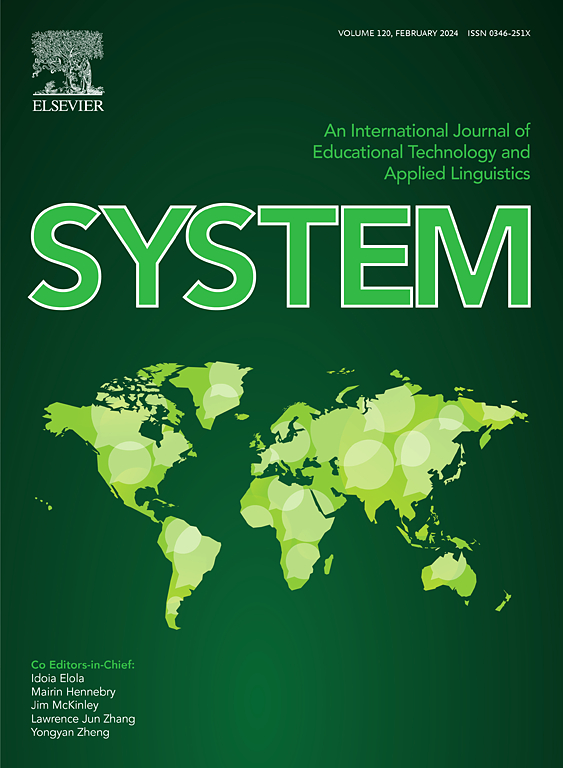Bridging classroom and real-life learning mediated by a mobile app with a self-regulation scheme: Impacts on Chinese EFL primary students’ self-regulated vocabulary learning outcomes, enjoyment, and learning behaviours
IF 4.9
1区 文学
Q1 EDUCATION & EDUCATIONAL RESEARCH
引用次数: 0
Abstract
This paper proposes and evaluates an innovative pedagogical design using Vocab+, a mobile app with a self-regulation scheme to support self-regulated vocabulary learning (SRVL) of 86 Grade-4 Chinese students and bridge classroom and real-life learning. The participants were from two classes from a school in Eastern China and were randomly assigned to the experimental or the control group. Both groups were taught by the same teacher, but Vocab+ was only integrated into the pedagogical design for the experimental group. A mixed-method research approach was employed. Data collection included pre- and post-vocabulary tests, pre- and post-questionnaires on enjoyment, and students' log data on Vocab+. Quantitative analysis was conducted to assess the impacts of the proposed pedagogical design using Vocab + on students' SRVL outcomes and enjoyment. An epistemic network analysis (ENA) was also performed to explore the evolution of co-occurrences of SRVL behaviours over time. The results showed that the Vocab + condition significantly enhanced the students' learning outcomes and increased their enjoyment by effectively bridging the gap between classroom and real-life learning. The ENA results indicated changes in SRVL patterns in learning activities facilitated by Vocab+. These findings’ implications for SRVL pedagogical design and future research are discussed in this paper.
基于自我调节方案的移动应用连接课堂与现实学习:对中国小学生自我调节词汇学习成果、享受和学习行为的影响
本文提出并评估了一种创新的教学设计,使用具有自我调节方案的移动应用程序Vocab+来支持86名四年级中国学生的自我调节词汇学习(SRVL),并架起课堂和现实学习的桥梁。参与者来自中国东部一所学校的两个班级,他们被随机分配到实验组和对照组。两组由同一位老师授课,但Vocab+仅被纳入实验组的教学设计中。采用混合方法进行研究。数据收集包括课前和课后词汇测试、课前和课后享受问卷调查以及学生在Vocab+上的日志数据。我们进行了定量分析,以评估使用Vocab +的拟议教学设计对学生SRVL结果和享受的影响。还进行了认知网络分析(ENA),以探索SRVL行为的共现随时间的演变。结果表明,Vocab +条件有效地弥合了课堂学习与现实生活学习之间的差距,显著提高了学生的学习效果,增加了学生的学习乐趣。ENA结果表明,在Vocab+的促进下,SRVL模式发生了变化。这些发现对SRVL教学设计和未来研究的启示在本文中进行了讨论。
本文章由计算机程序翻译,如有差异,请以英文原文为准。
求助全文
约1分钟内获得全文
求助全文
来源期刊

System
Multiple-
CiteScore
8.80
自引率
8.30%
发文量
202
审稿时长
64 days
期刊介绍:
This international journal is devoted to the applications of educational technology and applied linguistics to problems of foreign language teaching and learning. Attention is paid to all languages and to problems associated with the study and teaching of English as a second or foreign language. The journal serves as a vehicle of expression for colleagues in developing countries. System prefers its contributors to provide articles which have a sound theoretical base with a visible practical application which can be generalized. The review section may take up works of a more theoretical nature to broaden the background.
 求助内容:
求助内容: 应助结果提醒方式:
应助结果提醒方式:


